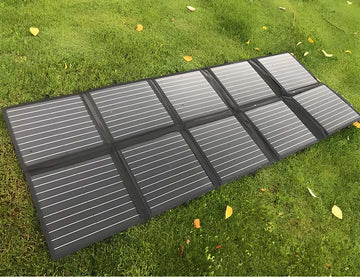Introduction to Solar System Encapsulation and Protection
Solar power systems are exposed to the external environment and are susceptible to erosion and damage by various natural factors, so it is especially important to encapsulate and protect them. In this article, we will introduce the steps and points of DIY solar system encapsulation and protection in detail to help readers build a safe and stable solar power system.The Importance of Solar System Encapsulation and Protection
Solar power system usually consists of solar panels, racking, inverters, battery packs and other components. These components are not only expensive, but also once damaged, will seriously affect the operational efficiency and safety of the entire system. Therefore, encapsulation and protection of solar energy system can effectively prevent the erosion and damage of wind, sand, rain, snow, lightning and other natural factors, to ensure the long-term stable operation of the system.
Preparation before DIY solar system encapsulation and protection
Before DIY solar system encapsulation and protection, you need to do a good job of preparation. First of all, you need to understand the structure and performance characteristics of the solar energy system in order to select the appropriate encapsulation materials and protection methods. Secondly, it is necessary to prepare the necessary tools and materials, such as screwdrivers, wrenches, insulating tape, waterproof tape, sealant, etc. Finally, you need to ensure the safety and tidiness of the work area to avoid accidents during operation.
DIY Solar System Encapsulation and Protection Steps
Solar panel encapsulation
(1) Clean the surface of the solar panel: Use a soft cloth and water to clean the surface of the solar panel to remove dust and dirt.
(2) Install the frame: According to the size and shape of the solar panel, choose a suitable frame for installation. The bezel should be firmly installed and there should be no gap between the bezel and the solar panel.
(3) Encapsulate the back panel: Install the back panel on the back of the solar panel to increase its strength and stability. The back panel should be made of waterproof, moisture-proof and corrosion-resistant materials.
(4) Seal the interface: Use sealant to seal the interface between the solar panel and the frame and back panel to prevent moisture and dust from entering.
Reinforcement and antirust of bracket
(1) Check the solidity of the bracket: Make sure the bracket is firmly installed without shaking. If necessary, reinforce the structure of the bracket or use support rods to increase stability.
(2) Anti-rust treatment: Apply anti-rust treatment to the bracket, such as spraying anti-rust paint or using anti-rust agent. This helps to extend the life of the bracket and reduce maintenance costs.
Protection of the inverter and battery pack
(1) Installation of waterproof cover: Install a waterproof cover for the inverter and battery pack to prevent rainwater intrusion. The waterproof cover should be made of weather-resistant and waterproof material.
(2) Ventilation and heat dissipation: Ensure that there is enough ventilation space around the inverter and battery pack to dissipate heat. Avoid damage to the equipment due to prolonged operation in a high temperature environment.
(3) Lightning protection and grounding: Install a lightning protection and grounding device in the solar energy system to prevent lightning damage to the system. The lightning protection grounding device should comply with relevant safety standards.
Cable organization and protection
(1) Organize cables: Organize the cables in the solar energy system to avoid clutter. Use cable clamps or ties to fix the cables on the bracket or wall.
(2) Protect cables: Protect the cables by wrapping the exposed parts with insulating tape or sealing the ports with waterproof tape. This helps prevent damage and corrosion to the cables.
Regular Inspection and Maintenance
(1) Regular Inspection: Regularly inspect the solar system, including the performance and status of solar panels, racking, inverters, battery packs and other components. If there is any abnormality, deal with it in time.
(2) Cleaning and maintenance: Regularly clean the dust and dirt on the surface of solar panels and bracket to maintain its good heat dissipation performance and power generation efficiency.
(3) Replacement of damaged parts: If you find that the parts in the solar energy system are damaged or aging seriously, they should be replaced in time to ensure the normal operation of the system.
DIY solar energy system packaging and protection of notes
(1) Follow the relevant safety regulations during operation to ensure safe operation.
(2) Select high-quality encapsulation materials and protection methods to ensure the stability and safety of the solar energy system.
(3) Pay attention to the implementation of safety measures such as waterproof, moisture-proof and lightning-proof to avoid damage to the system caused by natural factors.
(4) Keep clean and tidy in the process of encapsulation and protection to avoid impurities from entering the system and affecting the performance.
(5) Regularly inspect and maintain the solar energy system to detect and deal with potential problems in time.
Conclusion
Through the process of DIY solar system encapsulation and protection, we can effectively improve the stability and safety of the solar system, extend its service life and reduce maintenance costs. At the same time, it is also an environmentally friendly and energy-saving behavior, which helps to promote the development and application of renewable energy technologies. We hope that this article can provide readers with some useful references and insights in DIY solar system encapsulation and protection.

















